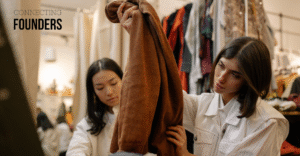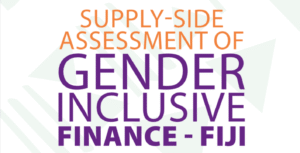Sustainable Fashion in SEA Spins Lucrative Opportunity: Just because secondhand is cheaper doesn’t mean the business opportunities are smaller
By Anne Somanas
Globally, the fashion industry accounts for 8-10% of global carbon emissions. The scale of damage to the environment is tremendous, but so is the opportunity for implementing circular economy models.
Earlier this year, an urban myth started on TikTok that workers at Chinese fast-fashion company Shein were hiding secret messages in clothing tags to beg for help. Although quickly disproven, the myth had already spread like wildfire; such a rumor is not so hard to believe given existing reports about dire conditions in garment factories.
The response illustrated a mainstream consciousness about the perils of fast fashion. Although the baseline perception is that fast fashion is harmful, not many people realize just how polluting the modern fashion industry is.
According to United Nations Environment Programme statistics from 2019, 8-10% of global carbon emissions and 24% of insecticides can be credited to the fashion industry, whilst 20% of wastewater is from fabric dyeing and treatment. Even though fashion doesn’t make the list of top 10 largest industries in the world, it ranks 6th in terms of most polluting & environmentally taxing industries.
The farming of cotton is also very water-intensive & fertilizer-intensive. It takes 2,700 liters of water to make one t-shirt – yet according to research by McKinsey, that same t-shirt, like other garments around the globe – has a 60% chance of ending up in a landfill less than a year after production.
British charity Barnado’s studies of 2000 women found that a piece of clothing is worn on average just seven times then disposed.
On a local Thai Facebook page, second hand blouses in good condition, albeit low grade, are being sold for one Thai baht (about 0.026 US dollars) apiece if purchased in bulk orders of 100 pieces or more. These will likely end up being resold at ultra-bargain prices in the stalls of local flea markets.
The initial cost to the environment is exorbitant. Yet not only is fast fashion cheap; it quickly and exponentially loses its resale value.
According to McKinsey, the amount of textile waste worldwide is enough to fill the Sydney Harbor annually.
Not all clothing gets reused or resold, nor is it always worth the time and effort monetarily – especially when it comes to no-name brands. Even local charities state that they often receive more clothing than they can handle.
But our clothing is polluting the environment long before it ends up in landfills. Simply by laundering synthetic textiles like nylon or polyester, we are releasing 0.5 million tonnes of plastic microfibers into the oceans annually around the globe – the equivalent of 50 billion plastic bottles – all of which are non-biodegradable microplastics that can take up to two centuries to break down.
The global consumption of synthetic yarns and fibers is also increasing at an alarming rate, rising from a few thousand tonnes in 1940 to more than 60 million tonnes in 2018.
Fast fashion has made it possible to cheaply keep up with the trends. The fashion industry – especially fast fashion – relies heavily on a sense of perceived obsolescence to drive growth. And, globally, in response, we are consuming textiles faster and faster.
Global fiber production has almost doubled in the past two decades, from 58 million tonnes in 2000 to 109 million tonnes in 2020.
These silent menaces continue to damage the environment, not to mention the lack of ethical practices in garment factories – brought into the public limelight by disasters like the 2012 Dhaka garment factory fire or 2013 collapse of the Rana Plaza factory in Bangladesh – that ignite concerns about how we can consume and dress in socially conscious ways that support fair trade practices.
As shocking as these statistics may be, it is also important to recognize that the textile industry is the economic foundation for several Southeast Asian countries that have grown their economies by catering to large fast fashion brands.
Globally, the fashion industry is valued at $2.4 trillion USD and employs over 75 million people. An overwhelming 75% of these workers – approximately 65 million as of 2019 – are from Asia Pacific. It is important to realize that when large companies switch to “greener” practices, it is these laborers who feel the heat.
Shifts in consumer behavior
As awareness spreads of the harm of the global fashion industry, it is also turning into fuel for the growing secondhand fashion industry, especially in Southeast Asia where 95% of millennials surveyed in Southeast Asia and Hong Kong by Singapore’s recommerce giant Carousell felt that purchasing pre-owned items is more sustainable, with 50% saying that they felt very strongly about this.
A 2021 study by MDPI confirmed that consumers are not just becoming more interested in engaging sustainable fashion to help preserve the environment; they will also pay more for slow fashion products which they see as more valuable compared to fast fashion products that are detrimental to sustainability.
The global trend of recommerce – or the buying and selling of pre-owned items – is also accelerating in this part of the world as the region’s stigma around preloved items slowly erodes.
Most importantly, it is important to recognize that just because secondhand is cheaper doesn’t mean the business opportunities are smaller. The market value of the opportunity is sizable.
In fact, the global secondhand apparel market is expected to grow three times faster than the overall global apparel market, which, according to the Global Data 2022 Market Size and Growth Estimates, amounts to 127% growth by 2026.
GlobalData also found that fashion resale is growing a whopping 21 times faster than the sales of new clothing. Based on the current trajectory, resale business is expected to reach $36 billion by 2024 and to surpass fast fashion by 2029.
Stats about the market size of the secondhand apparel sector in Southeast Asian countries indicate plenty of room for growth, particularly in countries like Vietnam and Indonesia where the population base is large but the per capita consumption of secondhand fashion is still much lower than the regional average.
The two countries with the highest secondhand apparel consumption per capita are Singapore, which is home to recommerce greats like Carousell and Refash, and Malaysia, which has a very developed secondhand market that relies heavily on thrift imports from the United States.
There are many business models that can be implemented to make the fashion world more circular. Numerous opportunities with consumers and SMEs in the sector exist all along the way from the production stages until clothes arrive in the hands of consumers.
Many entrepreneurs are responding with a shift towards more sustainable solutions, and launching and building fashion companies based on circular economy business models. Here are a few examples from Southeast Asia, many of which are female-led:.
Upcycling
Moreloop, which has one female as co-founder, curates surplus fabrics from quality garment factories to create a market to allow SMEs to access quality fabrics at reasonable prices.
Sorore Fashion is a newly launched female-led slow fashion brand 100% made in Bangkok with no pre-made stock – each piece is made to order, to prevent unsold stock. All pieces are made from upcycled fabrics via surplus or “deadstock” from local factories.
Thrifting
Thryffy is a peer-to-peer consumer fashion marketplace for anyone to “snap” away the clutter in their closets. The mobile app marketplace currently operates in Malaysia and Brunei, providing a resale channel to unlock the value of thrifted items and promote the idea of sustainable culture.
Refash – now Singapore’s largest thrift store, was founded six years ago in 2016 and generates $11 million USD per year; its repurchase and resale model is similar to Plato’s Closet in the US and newcomer Loopers.shop in Thailand.
Swapping
Fashion Revolution Thailand, part of the global movement, hosts clothes swapping events that have quickly grown in popularity in Bangkok. To date, Fashion Revolution, which charges THB 150 (~4 USD equivalent) for their events, already has more than 11,000 individuals in the community.
Swoop Buddy is a community onlines clothes swapping platform located in Thailand. They recently joined hands with Pomelo to host an in-person clothes swap with Pomelo influencers & local social enterprise & thrift shop Second Chance Bangkok.
Mending
Reviv Thailand, a sustainable and fair trade solution for online clothes alteration and repair, is a purposeful community that exists to promote reuse & repair lifestyles in Thailand.
Leasing
Formal Affair Bkk is a female-led business in Thailand with a designer gown rental service model, similar to what Rent the Runway started out with.
Sustainable Fibers
Sucette is a newly launched female-led silk couture brand that employs local artisans and uses sustainable & local materials for all products. Each dress uses entire pieces of silk, no cuts, and thus is zero-waste with very low-waste printing techniques via eco-printing, botanical and natural dyes. Water use is kept to the minimum which is much less than industrial textile printing.
Folkcharm offers traceable and ethically made high quality apparel, accessories and textiles inspired by a balanced blend of contemporary living and local wisdom, all made from uniquely textured 100% locally sourced chemical-free hand-spun handwoven cotton. As a female-led ethical fashion enterprise that values transparency and traceability, Folkcharm attempts to demonstrate a balanced supply chain from cotton farmer, to weaver, apparel maker, marketer and consumer.
Resources:
For more information about sustainable fashion, check out Remake – a female-led global advocacy organization fighting for fair pay & climate justice in the clothing industry that publishes an annual Impact Report and Brand Directory tool to help drive industry progress towards fair pay and climate justice. Their Instagram page is an informative overview of concerning aspects of today’s fashion industry & sustainable models that could be adopted.
Additionally, the UN Alliance for Sustainable Fashion’s Fashion Sustainability Report in 2021 is a great resource that dives deep into Southeast Asia with an overview of each country.
Greening Economies, Enterprises and Jobs (2016) is a Report Guide produced in conjunction with the ILO that addresses the issues involved in the greening of enterprises and creation of jobs, while Employment, wages and productivity in the Asian garment sector: Taking stock of recent trends (2022) provides data and policy insights for the future of the garment industry & supply chains in Asia.






